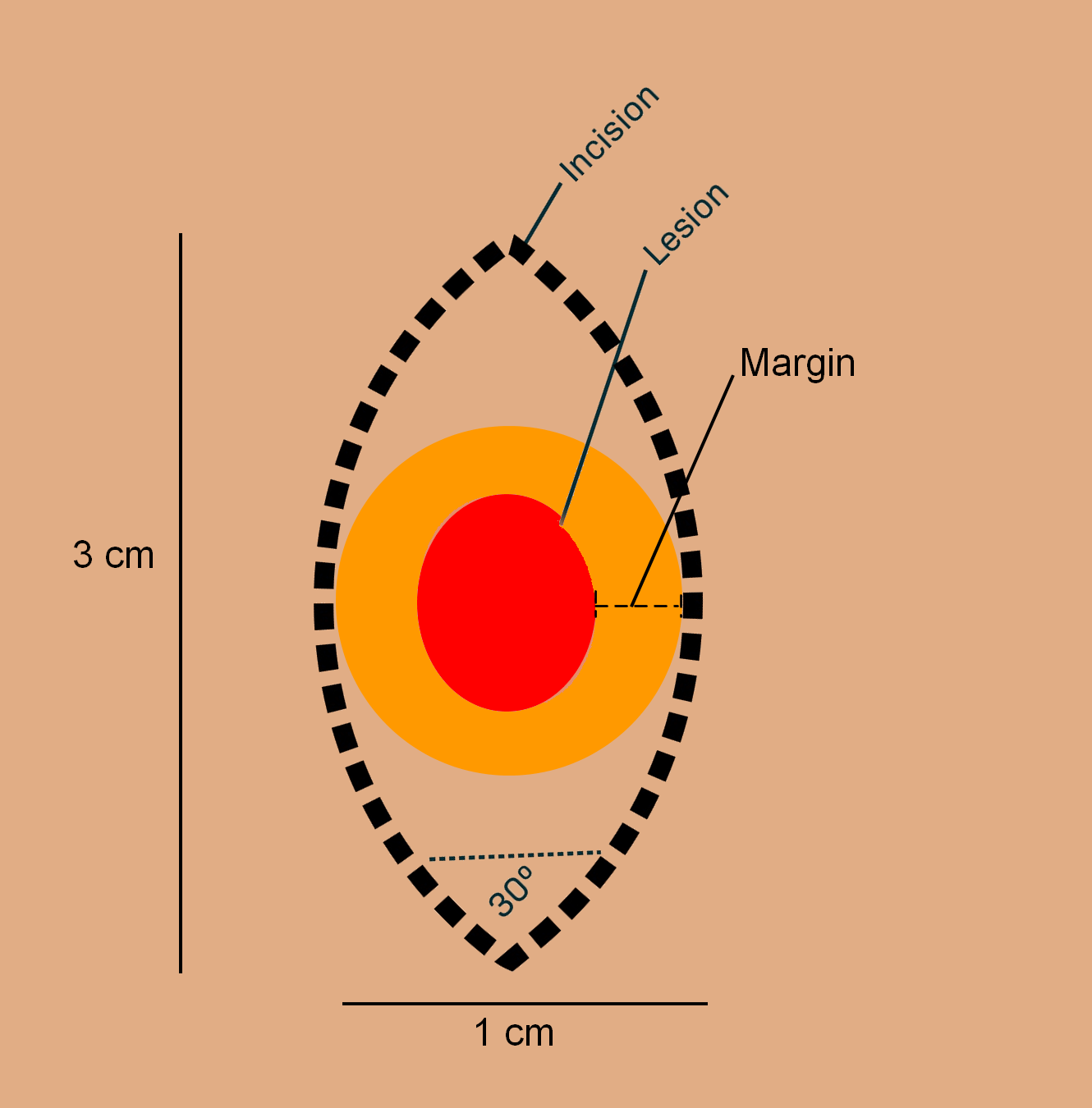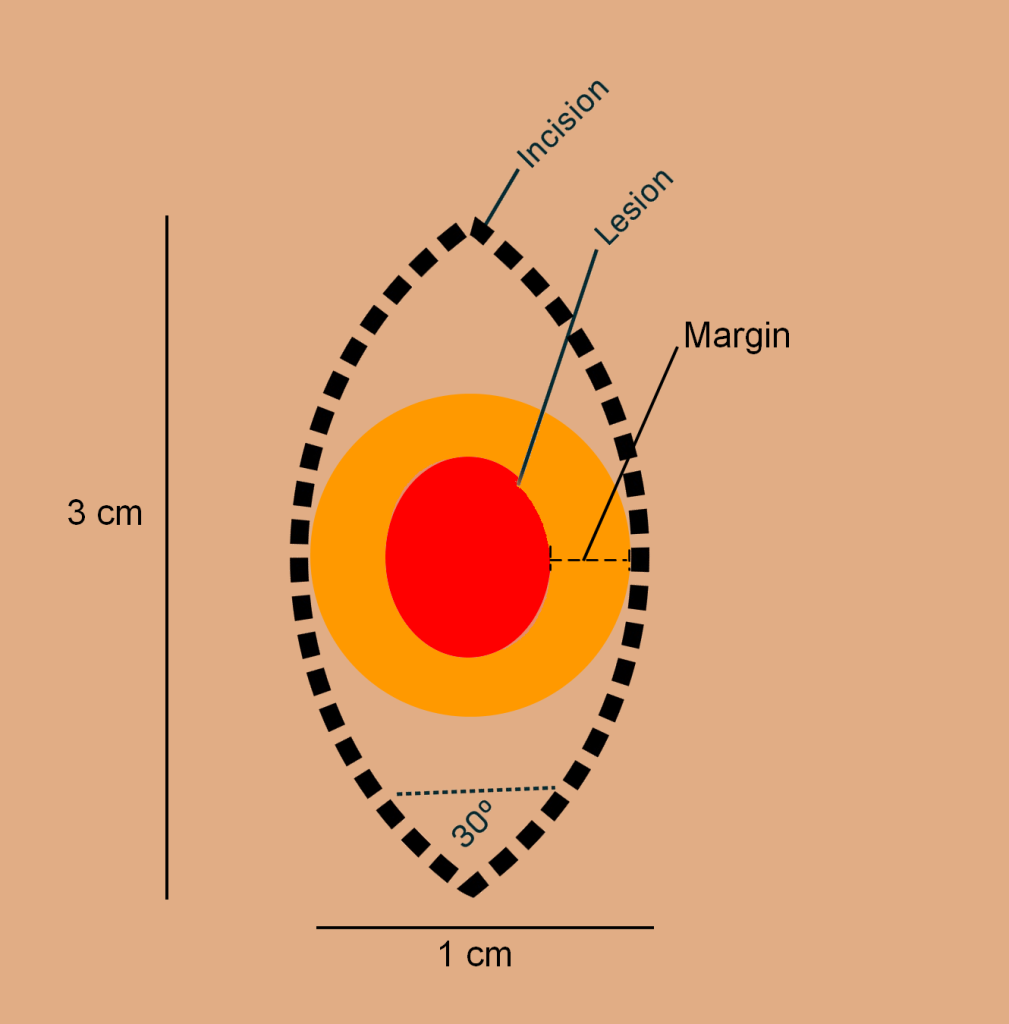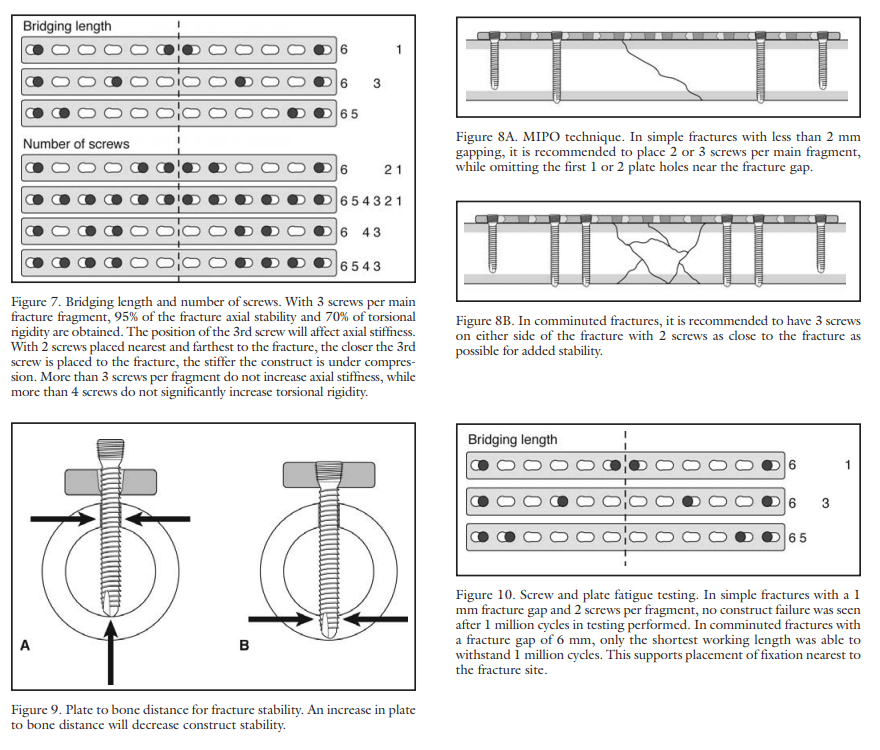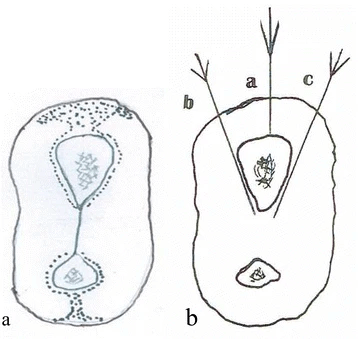Ends of ellipse (Apical angles):
- 30-degree angle (to minimize potential dog-ears or standing cones)
- Slightly larger angles possible in looser skin
Dimension of ellipse:
- Length to Width ratio of 3:1
- Greater than 3:1 ratio may be desirable in tighter skin, skin over the joints, and curved surfaces
Axis of ellipse:
- Along the wrinkle line or relaxed skin tension line
Margin of excision:
| Lesion type | Surgical margin |
|---|---|
| Uncertain | Consider shave or punch biopsy to delineate prior to elliptical excision or start with 1- to 2-mm margins to avoid unnecessary tissue removal. |
| Benign | Visible lesion removed |
| BCC | 3–5 mm |
| SCC | 3–6 mm |
| Initial excision of possible melanoma | 1–3 mm |
| Melanoma in situ | 5 mm |
| Melanoma < 1 mm | 10 mm (may need referral for lymph nodes 0.75 to 1 mm depending on ulceration, regression, or mitotic figures) |
| Melanoma > 1 mm | 20 mm and lymph node evaluation |




